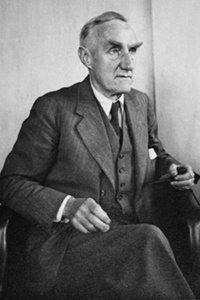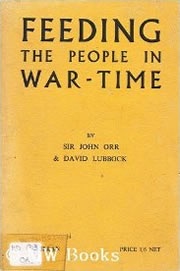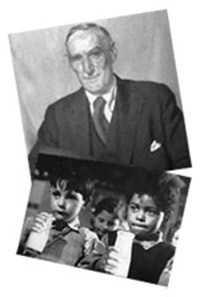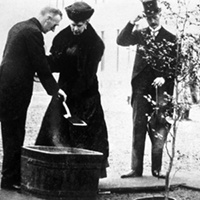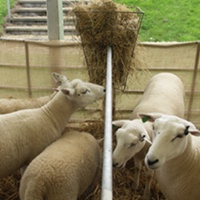During the final years of the war Orr became well known as a broadcaster and contributed to several publications which looked forward to post-war Britain. He was involved in the Paul Rotha films 'World of plenty' (1943) and 'The World is Rich'.
Elected as an independent MP for the Scottish Universities, Orr's maiden speech to the House of Commons on 12 June 1945 was on `National Health'. He resigned in 1946.
He was invited to attend a conference in Quebec to establish the Food and Agriculture Organisation (FAO) that same year. His invitation to join the British delegation was made at the last minute as the British Goverment began to tire of Orr's prickly independence and he was permitted to attend only as an observer - not to speak.
Despite this, and the British delegation voting against him, Orr was overwhelmingly elected as the first Director general of the FAO during the conference, a post he held until 1948.
Once in post, Orr immediately set-up a temporary food-sharing organisation to alleviate the predicted shortages of the winter of 1946-47.
Encouraged by this success, Orr decided to push for a powerful, international 'World Food Board'.
Unfortunately the pace at which Orr worked baffled and disturbed the British civil servants. He was not getting any younger, and he sensed that the opportunity for international cooperation was fading.
The World Food Plan was discussed at a meeting in Copenhagen and was supported by the USA delegation. Orr believed that he was on track to establishing a World Food Board.
But the British Government was opposed to Orr's plan and considered it to be impractical with serious financial implications for the UK. At a conference in Geneva, the USA delegation was persuaded to withdraw its support, and at the final vote Orr's plan was rejected.
With his plan defeated, and the old isolationism beginning to return to world affairs, Orr resigned from the FAO and returned to his farm in Angus a disappointed man.
Despite this defeat, and the number of subsequent attempts, Orr's plan is acknowledged as the closest to international cooperation in food sharing ever achieved.

